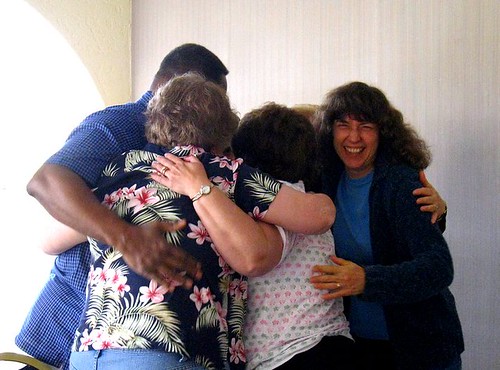 A few months ago, I taught three hours of webinars for NTEN on “Building Community through Twitter Chats.” And a funny thing happened during the first session: It wasn’t about twitter chats at all.
A few months ago, I taught three hours of webinars for NTEN on “Building Community through Twitter Chats.” And a funny thing happened during the first session: It wasn’t about twitter chats at all.
That’s because building community is not about the technology, but about building community! The same things that will make for a successful in-real-life community are the things that will make or break an online community.
So whether you are communicating with thousands of people around the globe via a Facebook group or twitter hashtag, or you are working in your own neighborhood, to bring people together around a Neighborhood Watch initiative, here are some of the things we have learned about building community.
Community is not about you or your organization. It’s about the community.
When people are starting out in social media, it is not uncommon to hear this question: “How can we build a community so that people will help support our organization?”
The short answer is, you can’t. Because that’s not what community is about.
And the easiest way to show that is to substitute the words “me and my and I” for “our organization.” Now say the following out loud:
“I need to build a strong community so that people will help support me.”
How many people do you think will feel motivated to help (vs motivated to bolt in the other direction)?
The goal of building a community is a strong community. And in the world of social change and community benefit, isn’t a strong community what we’re all about?
Those organizations who feel their online communities are a success define success by the strength of the community itself – active, participating, sharing. Those organizations who define success by support for the organization frequently declare their online efforts as failures, often quietly confessing, “We only keep our Facebook page because everyone says we have to have one.”
Community is not about what you do; it’s about how people feel.
When it comes to building an online community, we tend to get mired in the tech and the tools. Truth be told, though, all the cool tools in the world won’t encourage people to come back over and over, to participate in your community. For that to happen, it’s not about the tools, but about the feelings your community evokes, the environment you create.
During my NTEN webinar, I asked this question: What does it feel like when you are part of a community? How are people acting when they are part of a community?
Here is what people shared in response:
- When I am apart of a community it feels like a comfortable space, a space where I am free to be me.
- Like you are with good friends.
- I feel connected. Involved. Nurtured. Engaged. Mutually supportive.
- Sharing ideas and fears with friends.
- Glad to be there.
- I feel like I can achieve more as part of a community.
- Being part of a community feels supportive and relevant.
- When I am part of a community, I feel like I have my back covered.
Whether you are building a community that will meet in a church basement or on Facebook, if your community evokes these kinds of feelings, people will stay and keep coming back.
Communities that thrive are about conversation, not link-sharing.
I participate in several online communities. Those groups are the first place I check in the morning and the last before I go to bed. Regardless of whether those groups have 75 people or 3,000 (which is, in fact, the range of my favorite communities), those communities mean so much to the people there, that it is common to see a quick post expressing gratitude for all we receive by being part of the group.
The difference between groups you cannot wait to visit and those you quickly forget about all comes down to one thing: vibrant communities have a culture of conversation.
And conversation is the opposite of answering every query with “Check out my blog post!”
In a vibrant community, if you have a problem or an idea or a thought to explore, you know you will get in-depth answers from a variety of thinkers – and that people will respond to those thoughts with other thoughts. Are those threads filled with links about all kinds of things? YES, they are! But the links are not the point – they are in addition to the conversation, not instead of it.
There is nothing like sharing a problem or scenario and having friends respond with, “I had that happen once – it really sucks. Here’s what I did,” or “I have a form I use – I’ll post it to the group so we can all share it and make it better” or “I just blogged about that – the link is here – but here’s the nutshell of what I talked about…..”
A simple guideline can keep conversation within the group: If you post a link, tell us the gist of what we’ll find there, to keep the conversation in the community.
What Else?
As you consider what has made for the best online community experiences you have known, what have been YOUR favorite ways to build community? And what have been your favorite ways to keep that community alive and growing and energized – online or in real life?
